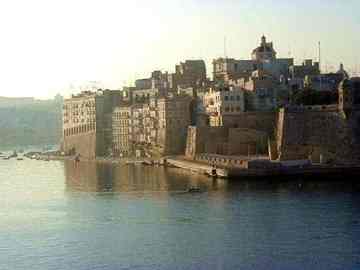Museums and historical sites received just under two million visitors in 2009, a drop of 12% from the preceding year, the National Statistics Office reported yesterday.
 In 2009, there were 66 active museums and historical sites in Malta and Gozo. 47% were owned by the State and the rest by the Church or a private organisation. Moreover, 35% of the museums and historical sites were managed by the State, while more than half were either managed by the Church or another voluntary or non-profit organisation. Just over 30% were ethnology and anthropology museums; 20% were monuments and sites, and a further 15% were archaeology and history museums.
In 2009, there were 66 active museums and historical sites in Malta and Gozo. 47% were owned by the State and the rest by the Church or a private organisation. Moreover, 35% of the museums and historical sites were managed by the State, while more than half were either managed by the Church or another voluntary or non-profit organisation. Just over 30% were ethnology and anthropology museums; 20% were monuments and sites, and a further 15% were archaeology and history museums.
These museums and historical sites registered 2.2 million admissions during 2008, the majority of which were paid admissions (93%). 2009 saw a drop of 12% in total admissions when compared to the preceding year. In fact, the number of paid admissions in 2009 declined by 12% to 1.8 million, while free admissions decreased by 5% to 157,293.
The highest share of admissions was registered in art museums during the two years under review. Monuments and sites, and archaeology and history museums were also very popular.
During 2009, full-time paid staff employed by museums and historical sites decreased by 5% to 318 with respect to 2008. Over three fourths of the full-time employees in museums and historical sites were classified as ‘other’ staff. This category includes clerks, cleaners, and maintenance and security personnel. The number of part-time staff also dropped during 2009, standing at 65. In contrast, voluntary staff increased by 8% over 2008, to 159. The majority of voluntary workers were museum guides.
The income reported by these organisations amounted to €11.5 million in 2008, which increased by 8% to €12.5 million last year. More than half the income earned during 2009 was attributed to admission fees. In 2009, museums and historical sites received over €4.5 million in grants and subsidies, making up almost 37% of their income. This translated into a €1.0 million growth in this type of income when compared to 2008.
In 2008, these organisations spent €12.3 million. Staff costs contributed to just over half the total expenditure, while another 10% were subcontracting costs. 19% of these costs was spent on maintenance and administration. The total expenditure dropped by 11% in 2009 to €11.0 million, albeit the increase in the total revenue. During 2008, these organisations registered a net loss of €0.8 million, which was followed by a financial surplus of nearly €1.5 million last year.
Source: The Malta Independent [November 26, 2010]